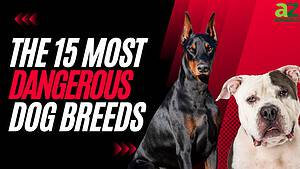The Goldendoodle is a desirable family companion because of its hypoallergenic coat- but what are all of the differences between an F1 vs F1B vs F2 goldendoodle dog? While this may all sound like a lot of nonsense at the moment, we will be going over these different categories of goldendoodles in great detail so that you can learn all of the differences between them.
Additionally, we will address the reasons that all of these different goldendoodle family trees exist, including their hypoallergenic qualities and overall cost. If you are considering adopting or breeding a goldendoodle, here’s everything you need to know about their ancestry and genetic capabilities.
Let’s get started and learn all about these different types of goldendoodles now!
Comparing F1 vs F1B vs F2 Goldendoodle
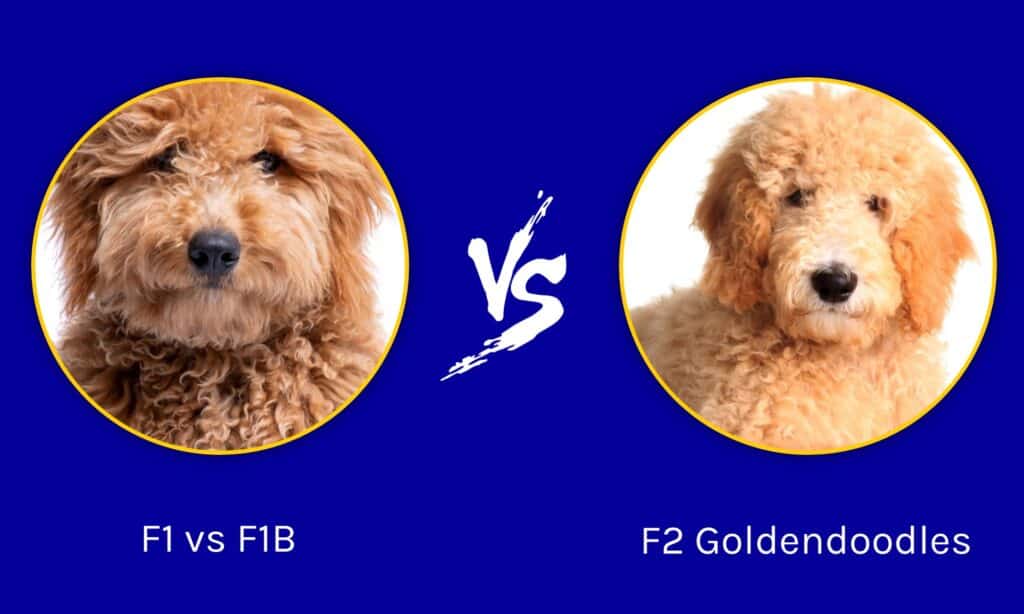
| F1 Goldendoodle | F1B Goldendoodle | F2 Goldendoodle | |
|---|---|---|---|
| Parents or Ancestry | Golden retriever and poodle | F1 goldendoodle and poodle | F1 goldendoodle and F1 goldendoodle |
| Appearance | The most golden retriever in appearance; has a loose wavy coat that still sheds | The most poodle in appearance; has wavy or curly coats that shed the least of the three | Most unpredictable in its appearance given the amount of genetic crossbreeding happening |
| Originally Bred For | Slight hypoallergenic uses; primarily as a family companion | The most hypoallergenic and intelligent, given its additional poodle breeding | Potentially hypoallergenic uses, but bred to establish both dog breed personalities |
| Behavior | Less hypoallergenic than other options and more playful; the most like a golden retriever out of the three | Intelligent and best for households with allergies or ones that want less shedding; the majority of poodle personality and behavior | The biggest wild card out of the three, but likely has the best split of their personality; the most like both a poodle and a golden retriever |
| Cost | Most expensive | May go either way depending on the demand | Least expensive |
Five Cool Facts About the Goldendoodle

The Goldendoodle is a relatively new breed that was first bred in the United States in the 1990s.
©W.H. Photography/Shutterstock.com
The Goldendoodle is a popular hybrid dog breed that has become increasingly popular in recent years.
Here are five cool facts about this lovable and friendly breed:
- They were first bred in the 1990s: The Goldendoodle is a relatively new breed that was first bred in the United States in the 1990s. The breed was created by crossing a Golden Retriever with a Poodle, and the resulting offspring were called Goldendoodles.
- They come in different sizes: Goldendoodles come in a variety of sizes, ranging from miniature to standard. Miniature Goldendoodles are typically between 15 and 30 pounds, while standard Goldendoodles can weigh up to 90 pounds.
- They are hypoallergenic: Goldendoodles are known for being hypoallergenic, which means that they are less likely to cause an allergic reaction in people with allergies. This is because they have a Poodle-like coat that sheds very little.
- They are great with children: Goldendoodles are known for being gentle and patient with children, making them a popular family pet. They are also great with other pets, such as cats and other dogs.
- They are intelligent and trainable: Goldendoodles are intelligent dogs that are easy to train. They are eager to please their owners and respond well to positive reinforcement training methods.
Overall, the Goldendoodle is a friendly, lovable, and versatile breed that has become increasingly popular in recent years. Whether you’re looking for a hypoallergenic family pet or a trainable and intelligent companion, the Goldendoodle is definitely worth considering.
Key Differences Between F1 vs F1B vs F2 Goldendoodle

©Anasty/Shutterstock.com
There are many differences between F1, F1B, and F2 goldendoodles. The primary difference is in their ancestry, as F1 vs F1B vs F2 goldendoodles all have different dog breed parents. F1 goldendoodles have golden retriever and poodle parents, F1B goldendoodles have poodle and F1 goldendoodle parents, and F2 goldendoodles have F1 goldendoodle parents entirely.
But how does this determine the differences in these breeds? And why are some breeds more desirable than others? Let’s discuss all of this in more detail now.
F1 vs F1B vs F2 Goldendoodle: Parents and Ancestry
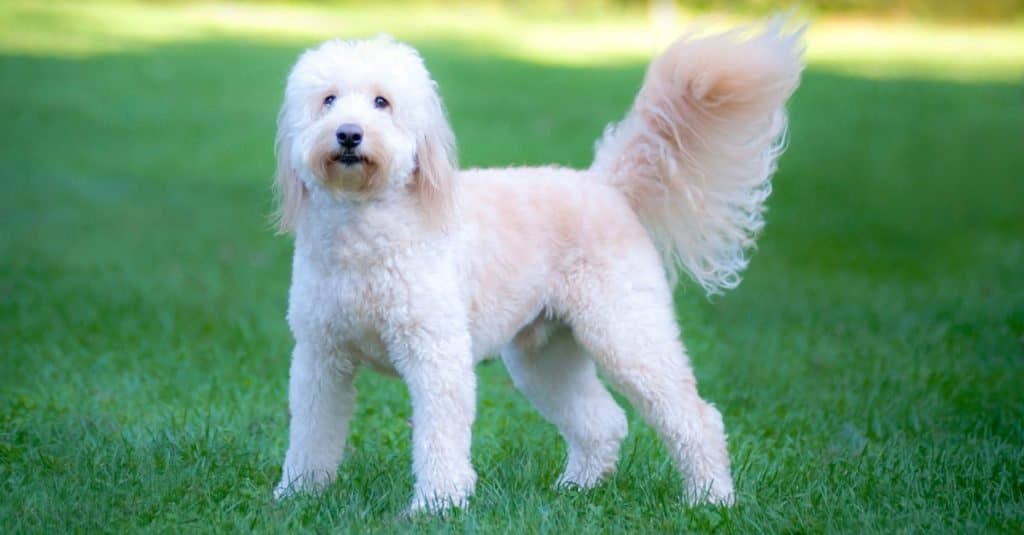
F2 goldendoodles are bred using purebred goldendoodles exclusively, while F1B goldendoodles use a goldendoodle and a poodle.
©Rena Schild/Shutterstock.com
The primary difference between F1 vs F1B vs F2 goldendoodles lies in their parents, breeding, and ancestry. Goldendoodles are bred for a variety of reasons, and we will address those differences at length later. Let’s talk about the dog breeds that make all of these different goldendoodle hybrids!
F1 goldendoodles are the original goldendoodles. They are bred using purebred golden retrievers and poodles, while both F1B and F2 goldendoodles have a goldendoodle as at least one of the two parents. For example, F2 goldendoodles are bred using purebred goldendoodles exclusively, while F1B goldendoodles use a goldendoodle and a poodle.
F1 vs F1B vs F2 Goldendoodle: Appearance

F1 goldendoodles have the loosest coat compared to F1B and F2 goldendoodles, given the amount of golden retriever DNA the hybrids have.
©Hannamariah/Shutterstock.com
The physical differences between F1 vs F1B vs F2 goldendoodles can be subtle. However, given that their parents and other dog breed qualities affect the way in which these puppies look and behave, you can imagine there are some subtle distinctions.
For example, F1 goldendoodles have the loosest coat compared to F1B and F2 goldendoodles, given the amount of golden retriever DNA the hybrids have. F2 goldendoodles are the most unpredictable in appearance given their strictly goldendoodle DNA, and F1B goldendoodles look the most like poodles, since their ancestry and breeding are primarily poodle.
F1 vs F1B vs F2 Goldendoodle: Original Reason for Breeding
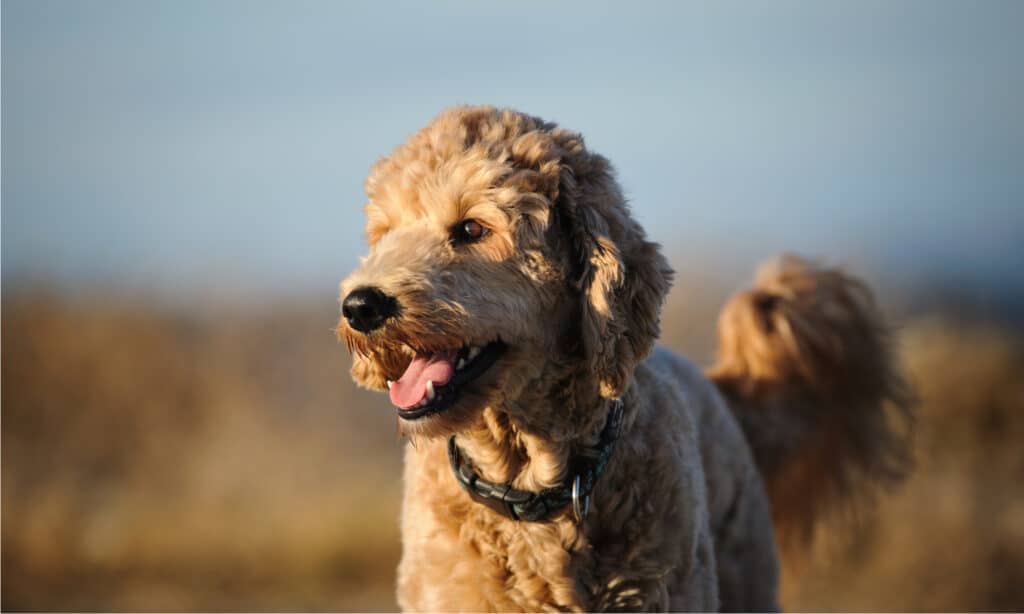
F1B goldendoodles are considered the most hypoallergenic out of all three of these goldendoodles, given their majority poodle DNA.
©everydoghasastory/Shutterstock.com
All goldendoodles are bred with hypoallergenic and low shedding needs in mind. However, there are some differences in the reasons why F1 vs F1B vs F2 goldendoodles are bred at all. While it all circles back to ancestry, let’s discuss some of these differences now.
F1B goldendoodles are considered the most hypoallergenic out of all three of these goldendoodles, given their majority poodle DNA. Poodles do not shed frequently and have hypoallergenic qualities, which many dog owners seek out nowadays. F1 doodles are slightly hypoallergenic, but may still shed and cause allergic reactions.
F2 goldendoodles are the biggest wild cards in terms of their coats and hypoallergenic properties, especially compared to the more genetically controlled F1 and F1B goldendoodle hybrids. However, F2 goldendoodles are desirable for their unpredictability and unique combinations, as the DNA of these dogs blends in a variety of ways!
F1 vs F1B vs F2 Goldendoodle: Behavior
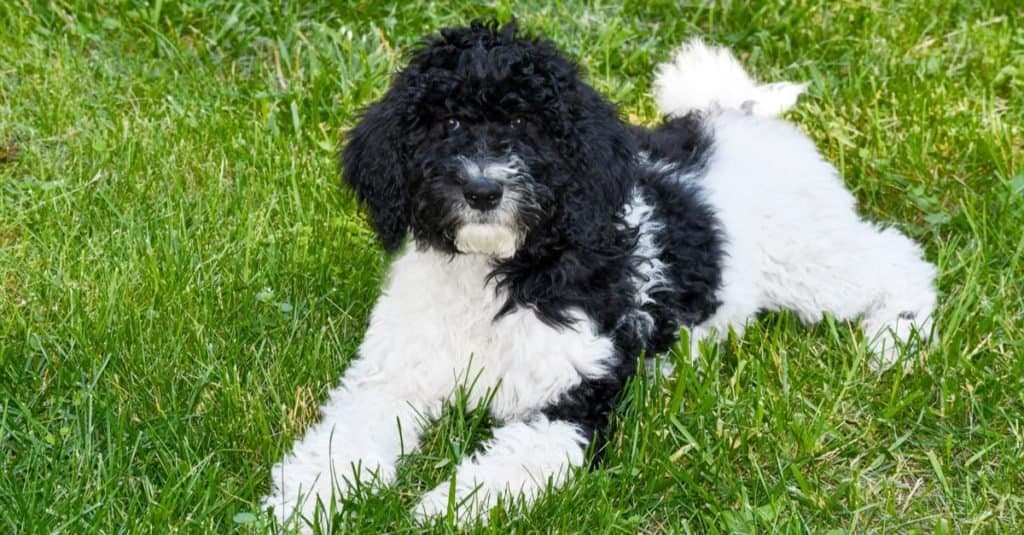
F2 goldendoodles are the biggest wild cards in terms of their coats and hypoallergenic properties, especially compared to the more genetically controlled F1 and F1B goldendoodle hybrids.
©Guy Banville/Shutterstock.com
Goldendoodles are prized for their friendly and affectionate natures, but there are some behavioral differences between F1, F1B, and F2 goldendoodles. If you are looking for a dog with the personality of a golden retriever, it is recommended that you stick with an F1 goldendoodle over an F1B or F2.
On the other hand, F1B goldendoodles will most resemble a poodle in personality and appearance, especially compared to an F1 or F2. When breeding two goldendoodles to create F2 doodles, you may be surprised at the personality that you end up with compared to the F1 or F1B possibilities!
F1 vs F1B vs F2 Goldendoodle: Cost of Adoption

F1B goldendoodles will most resemble a poodle in personality and appearance, especially compared to an F1 or F2.
©Making Connections/ via Getty Images
A final difference between all of these goldendoodle hybrids is the cost of their adoptions. All of these are considered specialty dogs, bred for specific purposes, but you may be interested in knowing how much each one of these variations costs.
Most breeders say that F1 goldendoodles cost more than F1B or F2, given their entirely purebred background. F2 goldendoodles are the least expensive overall, especially when you consider the amount of options possible in F2 goldendoodle DNA. F1B doodles may be more expensive than F1 doodles on occasion, but this typically only happens when F1B doodles are in demand for their hypoallergenic natures.
What Haircut Should I Get For a Doodle?
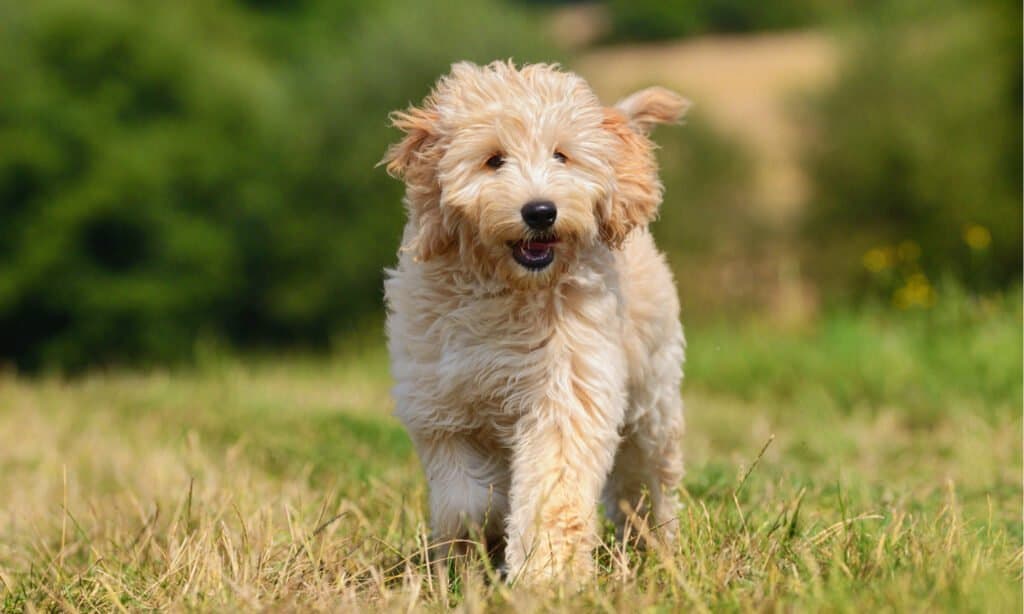
There are a variety of flattering haircuts that can compliment your Goldendoodle’s appearance.
©anetapics/Shutterstock.com
One distinctive characteristic of doodles is that they are cousins of poodles, who historically have sported very interesting haircuts! The “poodle” in your doodle means your dog will likely have naturally wavy or curly hair. We’ve created a list of some haircut options that may work for your doodle, piggybacking off of those time-tested cuts that poodles have proven are attractive and workable.
- Dutch Cut (Mohawk) While this cut is a popular choice for poodles who compete in shows, results may vary with your doodle. This classic cut features long hair on the top of the head, while the facial hair is shaved, giving the dog a mohawk look. The sides are left medium–length, while the paws are also shaved. The tail can also sport a pom pom or longer hair (if your doodle’s hair won’t create a pom pom).
- Lion Cut As the name implies, your doodle will look similar to a lion with this cut, as the neck and wither hair are left long to resemble a lion’s mane, while the legs, back, muzzle, and forehead are cut short. The tail is shaved to the near end, which is left long to give it a pom pom effect.
- Poodle Cut (Teddy Bear Cut) If your doodle enjoys masquerading as a wild animal, another option besides the lion cut is the teddy bear cut, which is basically a poodle cut. This mid-length haircut showcases the doodle’s natural curls, while its face is cut to look rounded, and its paw hair is left longer to mimic bear paws. A pom pom tail is an option with this popular cut.
- Lamb Cut This cut conjures domestic tranquility, as your doodle will look like a sweet lamb. While the body hair is cut short, the legs are cut to a medium length. The head, feet, and tail can be tailored to the owner’s preference.
- Short Cut Not only is this cut one of the most popular for most doodle owners, but it is also low maintenance. Doodles with naturally short hair do well with this cut, where all the body hair is cut short, hair on the ears is left longer, and the face and paws are shaved.
- Puppy Cut This hairstyle is popular for multiple dog breeds. The dog’s body hair is cut short, but the facial hair is left longer. This cut is fairly low-maintenance, but you’ll need to give your doodle regular brushing.
- Summer Cut When the summer heat turns up, this haircut can help your doodle stay cool. All the hair is cut very short except for pom poms on the legs and a tufted or pom pom tail.
The photo featured at the top of this post is © anetapics/Shutterstock.com
Ready to discover the top 10 cutest dog breeds in the entire world?
How about the fastest dogs, the largest dogs and those that are -- quite frankly -- just the kindest dogs on the planet? Each day, AZ Animals sends out lists just like this to our thousands of email subscribers. And the best part? It's FREE. Join today by entering your email below.
Thank you for reading! Have some feedback for us? Contact the AZ Animals editorial team.



